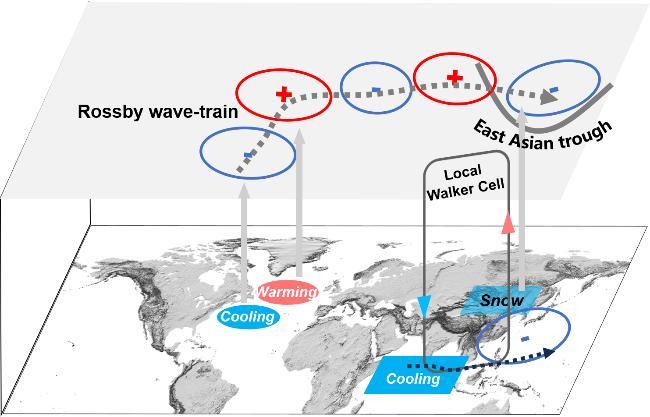In a study recently published in
Advances in Atmospheric Sciences, researchers from the Institute of Atmospheric Physics at the Chinese Academy of Sciences have revealed significant relationships between March and April variations in the East Asian trough (EAT). This atmospheric phenomenon, akin to a persistent low-pressure belt, acts as a crucial player in determining East Asian climate and weather during the crucial spring months.
Spring marks a crucial transitional period in East Asian atmospheric circulation, where different evolutions of the intraseasonal-scale circulation anomalies give rise to various climate anomalies. Seasonal averages often fall short in effectively capturing the evolving characteristics of monthly-scale circulation, presenting challenges in understanding and predicting East Asian spring climate anomalies.
The research team identified a persistent mode of EAT month-to-month variation in March-April, accompanied by long-lasting climate anomalies such as air temperature and precipitation over the region.
Delving into the potential mechanisms behind the persistent EAT anomaly in March-April, the scientists pinpointed culprits, including: Persistent dipole sea surface temperature (SST) anomalies in the mid-latitude North Atlantic, capable of triggering Rossby wave trains that influence the EAT during March-April; a tropical Indian SST anomaly, influencing Walker circulation and lower tropospheric atmospheric circulation in the western Pacific, significantly impacting the southern part of the EAT; and continuous snow cover anomalies in Northeast Asia, altering local thermodynamic properties and favoring the persistence of northern EAT anomalies during March-April.
Schematic plot of the physical mechanisms of the persistent EAT anomaly in March-April. (Image by IAP)
"Remarkably, signals of these impact factors could be traced back to February," noted Prof. SUN Jianqi, the corresponding author of the study. "These signals offer a valuable temporal window for predicting persistent East Asian climate anomalies in spring."
This newfound understanding holds the potential to improve the accuracy of regional climate predictions, thereby contributing to more effective disaster prevention and mitigation efforts.
Reference: Yu, S., and J. Q. Sun*, 2024: Persistent variations in the East Asian trough from March to April and the possible mechanism. Adv. Atmos. Sci., In press, https://doi.org/10.1007/s00376-023-3024-7.
Media contact:
Ms. LIN Zheng
Email: jennylin@mail.iap.ac.cn
Tel: 86-10-82995053
http://english.iap.cas.cn/

